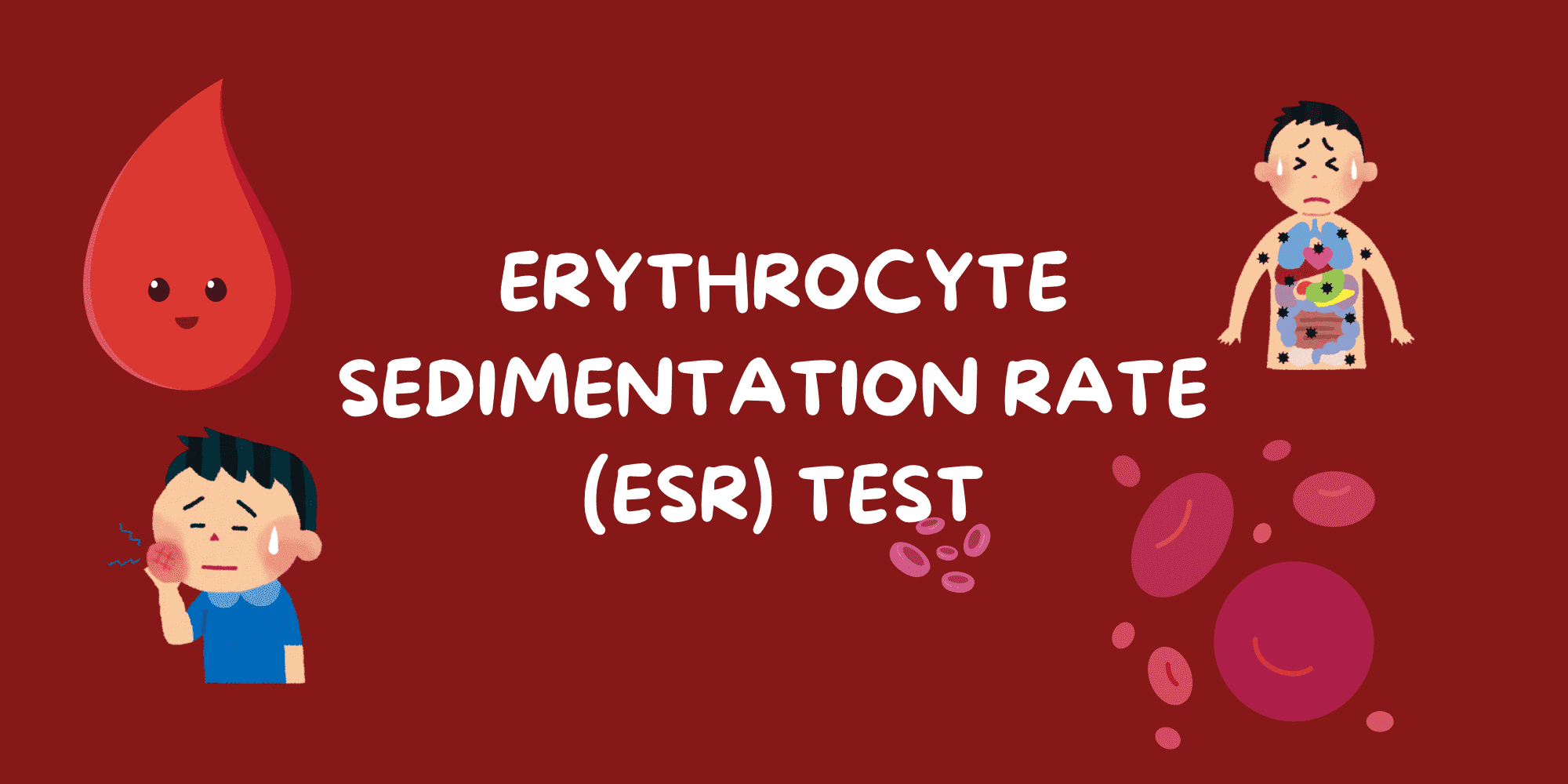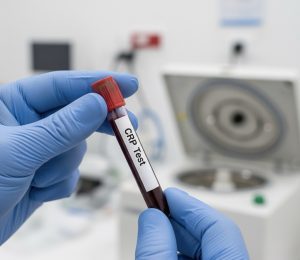The ESR test has to be one of the most common blood tests done in Nigeria today. Yet even in 2025, many people still find themselves asking, What is ESR test used to diagnose? As a medical laboratory scientist, I’ve seen countless patients worry when they see “ESR” or “erythrocyte sedimentation rate” written on their results. The truth is, this test—sometimes called the SED rate or inflammation test—is a simple but powerful way to check what’s happening inside your body.
When inflammation is present, your red blood cells settle faster, and that change tells your doctor that something might be wrong. But ESR doesn’t point to one single disease. Instead, it helps uncover issues like infections, autoimmune conditions, and even some chronic illnesses. In this article, we’ll break down what ESR test is used to diagnose, how it works, when you should consider getting it, and how to read your results correctly. We’ll also look at the normal ESR range, ESR test price in Nigeria, and what it means when your ESR is high or low.
What Is an ESR Test?
The ESR test, or Erythrocyte Sedimentation Rate, is one of the most requested blood tests in Nigerian laboratories today. It measures how quickly red blood cells (erythrocytes) settle at the bottom of a test tube in one hour. The faster they settle, the higher the sedimentation rate, which usually points to inflammation somewhere in the body.
In simple terms, ESR is an inflammation test. Inflammation makes red blood cells stick together, forming heavier stacks (rouleaux). These heavy cells fall faster, increasing the sedimentation rate. That’s why the test is sometimes called a sedimentation rate test or SED rate.
In my years as a medical laboratory scientist, I’ve run this test thousands of times. Sometimes patients are shocked when they see an ESR result that’s high, but they don’t feel sick. What they don’t know is that ESR doesn’t diagnose one single disease—it’s a nonspecific indicator of inflammation. It helps doctors know that something is going on internally, even if it doesn’t say exactly what.
What Is an ESR Test Used For?
Now, let’s answer the main question: what is ESR test used to diagnose? The ESR test helps detect and monitor conditions that cause inflammation. Doctors in Nigeria commonly request it to support diagnoses like:
- Infections – such as tuberculosis, pneumonia, pelvic inflammatory disease, or septicemia.
- Autoimmune diseases – like rheumatoid arthritis or systemic lupus erythematosus (SLE).
- Cancers – some blood cancers (e.g., multiple myeloma) can raise ESR.
- Chronic inflammatory conditions – like temporal arteritis or inflammatory bowel disease.
So, what is ESR test used to diagnose? It’s not to pinpoint one exact illness but to show whether there’s inflammation that needs further investigation. It acts as a warning light—if your ESR is high, the doctor knows to look deeper.
You may also want to read:
What Does High White Blood Cell Count Mean? Causes, Diagnosis, and Treatment Explained (2025 Guide)
How Does ESR Reflect Inflammation Rate?
The erythrocyte sedimentation rate (ESR) refers to how inflammation affects blood components. During inflammation, your body releases proteins like fibrinogen, which make red blood cells sticky. Instead of floating freely, they clump together, forming rouleaux. When blood in a test tube is left undisturbed, these clots sink faster because they’re heavier. The lab then measures the distance the red cells fall in one hour, reported in millimeters per hour (mm/hr).
In the lab, this test is often performed using the Westergren method—the gold standard. As a laboratory scientist, I ensure the blood is collected in an anticoagulant tube (usually with sodium citrate) and placed vertically in a rack away from vibration or drafts, because any disturbance can affect the sedimentation. In other words, the faster your red cells settle, the higher your ESR—and the more likely it is that your body has some ongoing inflammation.
When Should I Get an ESR Test?
Many Nigerians wonder when they should consider getting this test. From a lab perspective, I recommend ESR testing if:
- You have unexplained fever, fatigue, or body pain lasting for days.
- Your doctor suspects infection or inflammation.
- You’re being monitored for chronic diseases like arthritis or tuberculosis.
- Your doctor wants to track the effectiveness of treatment for inflammatory diseases.
In the lab, I’ve seen ESR results help confirm what clinical symptoms suggested. For example, in patients being treated for tuberculosis, we often check ESR monthly. When treatment works, the ESR gradually drops back toward the normal range. So, don’t wait until you’re seriously ill if your body feels “off,” your doctor may order this test as part of a basic inflammation checkup.
How Is an ESR Test Done?

Here’s a full breakdown of before, during, and after the procedure:
Before the test:
No special preparation is usually required. However, as a lab scientist, I always advise patients to avoid heavy meals or alcohol before any test because it may slightly influence plasma proteins. Let your healthcare provider know about any medications, as some can affect ESR results (like steroids or aspirin).
During the test:
- A small blood sample is drawn from a vein in your arm using a sterile needle.
- The blood is mixed with an anticoagulant to prevent clotting.
- It’s then transferred into a calibrated Westergren tube.
- The tube is left undisturbed for one hour.
- After one hour, the height of the clear plasma above the red cell column is measured in millimeters.
That’s your ESR value.
After the test:
There’s usually no side effect apart from slight bruising where blood was drawn. The result can be ready within a few hours.
What Are the Methods of ESR Test?
Clinics and labs use three practical approaches: Westergren (reference standard), Wintrobe, and Automated ESR analyzers. Each has method differences and implications for accuracy and workflow.
#1. Westergren method — the gold standard
How it’s done (step-by-step):
- Collect venous blood into a tube containing sodium citrate anticoagulant (correct ratio critical).
- Transfer diluted blood into a calibrated Westergren tube (200 mm length).
- Place the tube vertically in a rack in a vibration-free area at room temperature.
- Let it stand exactly 60 minutes. Measure the distance (mm) from the top of the plasma column to the top of the red cell column — that’s the ESR (mm/hr).
Why labs use it:
Most sensitive for high values and internationally standardized; recommended reference method in guidelines. Good for clinical studies and where exact comparability is needed.
Limitations:
Manual, slow (1 hour), needs careful handling and timing; pre-analytical errors (tilt, delay, wrong anticoagulant ratio) affect the result.
#2. Wintrobe method — older, shorter tube technique
How it’s done:
Undiluted whole blood is placed in a shorter tube (Wintrobe tube), and sedimentation is measured after 1 hour.
Differences from Westergren:
Less sensitive for high ESR values (tube too short to show extreme elevations). It’s simpler, but not preferred when detecting very high ESR is important. Some labs still use Wintrobe for convenience in small clinics.
#3. Automated ESR analyzers (modern)
Examples: StaRRsed, SFRI ESR 3000, Ves-Matic systems.
How they work (overview):
Use electronic or optical detection to estimate sedimentation or simulate rouleaux formation under controlled conditions. Some measure the aggregation rate using photometric/optical methods or a modified Westergren principle with closed tubes. Results are produced far faster and with less hands-on time.
What Is the Normal ESR Range Based on Gender and Age?
Normal ESR values vary depending on age and gender. From years of lab practice, these are the standard reference ranges:
| Category | Normal ESR Range (mm/hr) |
| Men (below 50 years) | 0 – 15 |
| Women (below 50 years) | 0 – 20 |
| Men (above 50 years) | 0 – 20 |
| Women (above 50 years) | 0 – 30 |
| Children | 0 – 10 |
| Newborns | 0 – 2 |
Because women naturally have higher plasma fibrinogen and hormonal fluctuations, their ESR normal range in females tends to be slightly higher.
Remember that each lab in Nigeria may have slight variations in these ranges depending on the method used. Always check your report’s reference range before comparing numbers.
What Do ESR Results Mean?
When patients ask, “What do ESR results mean?”, they usually want to know how a disease causes the ESR to change — not just the list of conditions. Here’s the lab-level explanation I give in the bench every day:
| Category | Factor | Effect on ESR | Type of Cause |
| Infections (bacterial, viral, fungal) | Inflammatory proteins ↑ | Increase | Pathological |
| Autoimmune diseases (RA, SLE) | Chronic inflammation, fibrinogen ↑ | Increase | Pathological |
| Cancers (multiple myeloma, lymphoma) | Abnormal globulins ↑ | Increase | Pathological |
| Kidney diseases | Retained proteins, inflammation | Increase | Pathological |
| Anaemia | Reduced RBC concentration | Increase | Pathological |
| Pregnancy | Plasma proteins ↑ (fibrinogen) | Increase | Physiological |
| Ageing | Plasma viscosity, protein change | Increase | Physiological |
| Menstruation | Temporary fibrinogen rise | Increase | Physiological |
| Obesity | Chronic low-grade inflammation | Increase | Physiological |
| Polycythaemia | High RBC mass, viscosity ↑ | Decrease | Pathological |
| Sickle cell disease | Abnormal RBC shape (no rouleaux) | Decrease | Pathological |
| Hyperviscosity / Paraproteinaemia (IgM) | Very thick plasma slows fall | Decrease | Pathological |
| Congestive heart failure | Altered plasma flow | Decrease | Pathological |
| Hypofibrinogenaemia | Low fibrinogen levels | Decrease | Pathological |
| Extreme leukocytosis | Crowded cells hinder fall | Decrease | Pathological |
| Dehydration | Plasma volume ↓, RBC concentration ↑ | Decrease | Physiological |
| High altitude living | Higher RBC count | Decrease | Physiological |
| Post-exercise (immediate) | Transient RBC changes | Decrease | Physiological |
Causes of High ESR
ESR measures how fast red cells fall through plasma in one hour. The fall speed depends on red-cell aggregation and plasma composition:
PATHOLOGICAL
#1. Acute-phase reactants raise fibrinogen and certain globulins
During infection, tissue injury, or autoimmune activity, the liver increases production of acute-phase proteins — most importantly fibrinogen, but also some α- and β-globulins. Higher fibrinogen reduces the negative surface charge on red cells and promotes rouleaux (stacking of red cells). Rouleaux are bigger “particles” and fall faster (Stokes’ law: sedimentation velocity ∝ particle diameter²). That makes ESR rise. This is the dominant mechanism in bacterial infections, many autoimmune flares (e.g., rheumatoid arthritis), and large-vessel vasculitides.
#2. Increased immunoglobulins and paraproteins
Chronic inflammatory states and plasma cell disorders (e.g., multiple myeloma) increase immunoglobulins. Moderate increases usually raise ESR because extra proteins promote aggregation. Extremely high levels (or certain types like IgM causing hyperviscosity) can paradoxically lower or distort ESR, but typically moderate hyper-gammaglobulinaemia increases ESR.
#3. Anemia increases ESR by reducing cell density
Anemia increases ESR by reducing cell density. When hemoglobin and hematocrit are low (e.g., iron deficiency, chronic disease), red cells are fewer and lighter, so they fall faster in plasma — ESR goes up even without much inflammation. That’s why doctors interpret ESR together with CBC.
#4. Malignancies (Cancers)
In diseases such as multiple myeloma, the plasma is flooded with abnormal immunoglobulins (paraproteins) that heavily influence ESR. I’ve seen ESR readings above 100 mm/hr in confirmed myeloma cases — a classic diagnostic clue.
PHYSIOLOGICAL
#1. Pregnancy and ageing raise baseline ESR
ESR naturally rises in pregnancy, especially during the second and third trimesters. This happens due to hormonal effects that increase fibrinogen and globulin levels. So, a pregnant woman with an ESR of 45 mm/hr may still be within physiological limits.
#2. Menstruation
Around menstruation, slight inflammatory changes occur in the endometrium, temporarily raising ESR.
#3. Aging
Elderly people often have higher baseline ESR even without disease, largely because of gradual protein composition changes in blood.
#4. Obesity
Obesity is associated with chronic low-grade inflammation — mild but persistent ESR elevation.
Causes of Low ESR
A low ESR means red cells are falling more slowly than normal. This happens when red cells resist stacking (rouleaux formation) or when plasma viscosity is too high.
PATHOLOGICAL CAUSES
- Polycythaemia (High RBC Count):
In diseases like polycythaemia vera, blood becomes thicker with red cells, leaving less plasma space. The increased viscosity physically slows down the fall of cells, giving a low ESR reading. - Sickle Cell Disease:
One of the most common causes of low ESR in Nigeria. Because sickle cells are irregularly shaped, they can’t form rouleaux. Even when infection is present, ESR may remain deceptively low. - Congestive Heart Failure:
Poor circulation and altered plasma proteins can slightly suppress ESR levels. - Hypofibrinogenaemia:
When fibrinogen levels are low (rare congenital condition or liver failure), rouleaux formation is impaired, slowing sedimentation. - Hyperviscosity Syndrome / Paraproteinaemia:
Excessive plasma proteins (especially large IgM molecules) can make plasma so thick that red cells can’t move freely, paradoxically lowering ESR. - Leukocytosis (very high white cell count):
White cells crowd the plasma, obstructing red cell movement, and giving a falsely low ESR.
PHYSIOLOGICAL CAUSES
- Dehydration:
When plasma volume drops due to dehydration, the blood becomes thicker, and ESR decreases. - High Altitude:
People living in high-altitude areas like Jos or Plateau State naturally have higher red cell counts; hence, ESR may be slightly lower. - Immediately After Exercise:
After strenuous activity, there’s temporary hemoconcentration and altered blood flow, which can reduce ESR momentarily.
How Do Disorders Lead to Changes in ESR?
Let’s break down how inflammation alters the sedimentation rate using real lab insights.
When an infection occurs, the immune system produces acute-phase reactants like fibrinogen, C-reactive protein, and immunoglobulins. These alter red cell charge, causing aggregation. The blood becomes “heavier” and settles faster. In chronic conditions such as rheumatoid arthritis, the persistent inflammation keeps ESR elevated for weeks. In contrast, in sickle cell anemia, the irregular shape of red cells prevents them from stacking up properly, resulting in a low ESR.
In the lab, I’ve seen this pattern help doctors differentiate between diseases. For instance, when a patient’s C-reactive protein (CRP) is normal but ESR is high, it often suggests chronic inflammation rather than an acute infection.
What Are the Risks Associated With ESR Test?
The ESR test itself is very safe. The only minor risks come from the blood draw:
- Slight pain or bruising at the needle site
- Rarely, an infection may occur if proper sterilization isn’t followed
As a licensed laboratory scientist, I always use sterile, disposable materials and follow strict infection control protocols. Every Nigerian lab accredited by MLSCN (Medical Laboratory Science Council of Nigeria) must maintain these standards.
What Errors Can Arise During ESR Testing?
Every lab test can be affected by pre-analytical or technical errors. Here are the most common issues that can cause false readings:
- Sample not vertical: even a slight tilt can increase the rate.
- Vibration: shaking the tube can disturb red cell settling.
- Improper anticoagulant ratio: too much or too little can alter results.
- Delay in testing: ESR must be set up within two hours of collection.
- Temperature: excessive heat or cold can affect sedimentation.
That’s why experience matters. In our lab, we handle ESR tests carefully- tubes are placed vertically on a stable surface and timers are set precisely to one hour.
What Is the Cost of an ESR Test in Nigeria?
In 2025, the ESR test price varies depending on the lab’s location and reputation. On average:
- Government hospitals: ₦1,500 – ₦2,500
- Private diagnostic centers: ₦2,000 – ₦4,000
- Premium or express testing: up to ₦5,000
Many Nigerians prefer private labs for faster turnaround, but all accredited facilities follow the same principles of accuracy. ESR is often included in a medical checkup package along with full blood count and CRP tests.
If you’re searching online for ESR blood test Nigeria, these price ranges are accurate for most states, including Lagos, Abuja, Kano, and Port Harcourt.
What is ESR test used to diagnose?
The ESR test—or erythrocyte sedimentation rate—is used to detect inflammation in the body. It helps doctors identify conditions such as infections, autoimmune diseases like rheumatoid arthritis or lupus, and some cancers. A high ESR indicates active inflammation, while a normal or low ESR suggests no major inflammatory activity.
Can ESR be high without infection?
Yes. ESR can be elevated even when there is no infection. Conditions such as anemia, autoimmune diseases (like lupus or rheumatoid arthritis), pregnancy, kidney disease, or even aging can cause ESR to rise. It simply means there’s inflammation somewhere in the body, but not necessarily an infection.
What should I do if my ESR is high but I feel fine?
If your ESR result is high but you don’t have any symptoms, don’t panic. ESR is a non-specific test- it doesn’t point to a particular disease. Your doctor may repeat the test after a few weeks or recommend other investigations (like CRP or blood counts) to check for hidden inflammation or chronic conditions.
Conclusion: What Is ESR Test Used to Diagnose?
To summarize, the ESR—or erythrocyte sedimentation rate—is one of the simplest yet most powerful indicators of inflammation in the body. It doesn’t give a specific diagnosis, but it helps guide further investigation into infections, autoimmune diseases, and chronic illnesses.
So, what is ESR test used to diagnose? It’s used to detect and monitor inflammation, especially when the exact cause isn’t yet known. From the laboratory bench, I can say that this test remains a cornerstone in Nigerian diagnostics because it’s affordable, quick, and informative.
When interpreting your results, remember that ESR alone doesn’t tell the whole story. It should be reviewed alongside symptoms and other lab findings like CRP, WBC count, and hemoglobin levels.
If your ESR is high, don’t panic—discuss it with your doctor. If it’s normal, that’s a good sign, but it doesn’t rule out every disease. Either way, this small test gives a big insight into your body’s internal balance.




